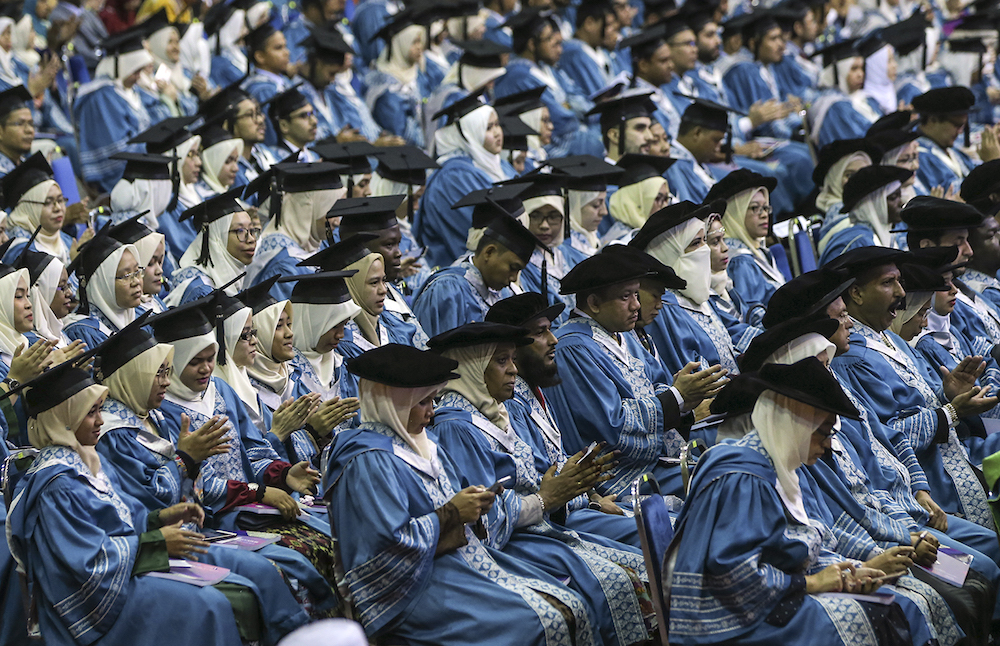KUALA LUMPUR, May 5 — It has been five years since Wan Ardatul Amani Wan Salim, now 41, made that faithful leap back home after a fruitful stint in the US.
Entrusted to lead a team despite her young age, she became the first Malaysian to build an astrobiological sensor and launched a Nasa satellite into space.
But youthful idealism drove her to return home — she wanted to harness her skills to save lives.
Certain her contribution would be appreciated, the scientist looked to the government for support. But what she got instead was a shocking lesson in an existing patronage system. Here, she claimed seniority or one’s extended network trumps talent in the race for federal grants.
Talent or not, she needed to get in line.
“I came back to help but I get so frustrated sometimes,” Wan Ardatul, or Dr Amani as she is affectionately called, said in an interview with Malay Mail here recently.
“I’m not asking for a high salary. I just want them to recognise merits, not because of things like seniority… they should empower innovators and focus on the quality of work, not quantity.”
A year after the Pakatan Harapan government promised sweeping education reform, Wan Ardatul, who now lectures full time at the International Islamic University of Malaysia (IIUM), claims patronage still looms large over public academia.
The electrical engineer, who led a team of 28 scientists, technologists and engineers, to work on Nasa’s maiden astrobiology programme dubbed “SporeSet”, said young researchers like her are sidelined because the grant system is bungled with red tape that enables favouritism.
This systemic discrimination, laments Wan Ardatul, is evident right from how the Education Ministry formulates the grant scheme itself.
Because of the hierarchical structure that governs grants disbursement, application criteria are based on a rigid sequence where junior researchers like her must start with the smallest funding and work their way up before they can apply for bigger grants.
For Wan Ardatul, a “junior” by local standards due to her only returning from the US to join IIUM four years ago, this meant contending with the most basic funding programme called the fundamental research grant scheme (FRGS), worth no more than RM70,000.
“I am considered a junior just because I came back five years ago, despite all my experience with Nasa,” she said.
“So my only option at the time is the fundamental grant, which is too little to cover laboratory equipment let alone develop products or prototypes.”
Prototyping is important because it allows researchers to collect valuable data through evaluation, usability or quality testing, and make technical improvements needed for commercialisation.
But prototyping requires serious funding, which most public universities lack.
This is why government grants, although very limited and often unable to match commercial funding, are so valuable to scientists like Wan Ardatul.
Yet she feels the government and university managements are doing the country’s talents a disservice by instituting discriminatory practices and excess bureaucracy to make access to grants so difficult.
She claimed the application process is too tedious and can take longer to approve. And then comes the selection process, which Wan Ardatul said is designed to give senior faculty heads near-absolute power to decide whose research or project gets precedence.
It was a system that demoralises talent, she bemoaned.
“Now I understand why most talents leave. They need support, but they’re not getting it,” the 41-year-old scientist said.
Researchers can only apply for Education Ministry grants through the university, which is typically decided by its research management centre comprising senior faculty heads.
This is when patronage is most visible, according to Wan Ardatul.
“It’s very much a top-down process,” she said.
Quantity over quality
The Education Ministry received RM60 billion or a fifth of this year’s federal Budget, with RM400 million allocated for research grants and RM30 million more in the form of matching grants.
Finance Minister Lim Guan Eng when tabling the Budget said the allocation size reflected the new government’s belief in education as a catalyst to its growth plans, and vowed to fund more scientific and technological research to spur innovation.
Yet little of that enthusiasm is felt in the universities, where grants often go to funding research publications simply because they help boost a university’s ranking at the expense of innovation.
In the last five years, several of the country’s top universities rapidly ascended the global ranking, thanks to a sharp surge in research papers — estimates suggest Malaysian researchers have published over 50,000 papers to date, higher than any of its regional neighbours.
But a large number of these publications carry almost no value in impact terms. QS, a global education consultancy, said last year that Malaysian universities continue to produce unproductive research with little industrial or real life use even if their ranks improved.
Underlying this malaise was a stubborn reluctance to invest in research and development, it noted.
Market heroes
As a fellow inventor, Mohd. Zuhaili Mohd Rodzi, 33, is all-too-familiar with the frustration that often consumes his peers.
A PhD holder with a knack for robotics, Zuhaili helped design and build an early flood detection system and an app that allows users to manage their garbage collection called “SmartBin”.
Yet none of the projects were deemed useful by his university, which twice rejected his grant application. But he holds no grudges with the faculty heads that shunned his proposals.
Instead Zuhaili said the fault lies with the entire education system.
“The thing is academics can only think like academics. So how they select is based on academic excellence and/or targets, which is very different from how commercial companies think,” he told Malay Mail.
“With industry, they don’t look at how well-written your proposal is, but if your ideas have commercial value.
“Maybe what we need is that bridge between industry and academia, but this is something we have talked about for so long,” he added with a wry laugh.



















